Journal of Creation 38(1):22–26, April 2024
Browse our latest digital issue Subscribe
The evolution of a story: weaving a tale that goes far beyond science
A review of: The Evolution of Everything: The patterns and causes of big history
by Brian Villmoare
Cambridge University Press, 2023
Brian Villmoare, an Associate Professor in the Department of Anthropology at the University of Nevada, Las Vegas, is a paleoanthropologist working in the Afar region of northern Ethiopia since 2002. In 2013, he was part of the team that discovered allegedly the oldest fossil specimen of our genus, Homo. As an undergraduate, he studied philosophy and English literature and has long been interested in how science, society, and philosophy intersect.
His book begins by informing us that the author intends to borrow from the history department in using ‘big history’, which seeks to give us a broader understanding of the past by utilizing multiple fields of study. He made it clear that this book will be one giant exercise in evolutionary storytelling. That is, not just the grand narrative of evolution, but an attempt to explain most of history and human action in evolutionary terms.
Materialistic bias from the outset
In seeking to explain all of human history through the lens of materialism, which he equates with science, he proceeds to define science for us on page 3:
“In its most basic form, science simply tries to describe the material world in as objective a way as possible. A scientific statement about the world has several important characteristics:
- Any scientific statement must invoke only forces and causes that can be observed by anyone using empirical methods. Science cannot attribute actions, for example, to ‘spirits’ that can only be seen by one privileged spiritualist.
- Any statement that one makes … must be testable by other scientists … .
- If there are competing explanations, the one with the fewest assumptions will be accepted.”
How much of this is science, and how much is materialistic bias? First, let us examine statement number two. The issue here is the example he gives about scientists examining a crater. While the first scientist makes a claim about a crater that other scientists can look at, the first scientist does not make a testable claim about an observable phenomenon. Only the crater is observable, not its cause. Scientists can develop competing explanations, but none can be properly tested. Nobody looking at this crater can see the event in question. His example of historical science violates the definition of science given.
Operational vs. historical science
It is important to distinguish empirical and historical science when defining science. Going forward, we will see that most of his claims about history do not fit the definition of science.
Ernst Mayr (one of the 20th century’s leading evolutionary biologists) describes the scientific weakness of evolutionary biology as follows:
“Evolutionary biology, in contrast with physics and chemistry, is a historical science—the evolutionist attempts to explain events and processes that have already taken place. Laws and experiments are inappropriate techniques for the explication of such events and processes. Instead one constructs a historical narrative, consisting of a tentative reconstruction of the particular scenario that led to the events one is trying to explain.”1
Jerry A. Coyne (professor in the Department of Ecology and Evolution at the University of Chicago) states:
“In science’s pecking order, evolutionary biology lurks somewhere near the bottom, far closer to phrenology than to physics. For evolutionary biology is a historical science, laden with history’s inevitable imponderables. We evolutionary biologists cannot generate a Cretaceous park to observe exactly what killed the dinosaurs; and unlike ‘harder’ scientists, we usually cannot resolve issues with a simple experiment, such as adding tube A to tube B and noting the color of the mixture.”2
Evolutionary biology and the other topics covered in this book mainly discuss matters of history that should not be conflated with hard sciences. The author fails to provide the crucial distinction, which creates a misconception about the reliability of claims made in these fields.
Since the author is a paleoanthropologist, it makes sense that he would loosely define science, as his field is about as soft as science can be, and the scientific method is applied very loosely. The criteria here claim that any hypothesis must be testable and involve an observable phenomenon using empirical methods. However, this idea is inconsistent with creating narratives about the unobservable and unrepeatable past. There is a philosophical commitment hidden in these criteria.
The philosophical commitment has been admitted before and shows the bias inherent in what many call science today. As revealed by the evolutionary biologist Richard Dickerson:
“Science is fundamentally a game. It is a game with 1 overriding rule: Rule #1: Let us see how far and to what extent we can explain the physical and material universe in terms of purely physical and material causes, without invoking the supernatural.”3
An eminent immunologist and Evangelical Christian summarizes the bias as follows:
“Most important, it should be made clear in the classroom that science, including evolution, has not disproved God’s existence because it cannot be allowed to consider it. Even if all the data point to an intelligent designer, such a hypothesis is excluded from science because it is not naturalistic.”4
The modern institutions of science have an extreme bias that rules out God, and thus the Bible, before the evidence is ever examined, and no matter what evidence is found, God will still be denied.
As a paleoanthropologist (a specialist in the field of paleontology), his field has a severe weakness that shows much of this book should be discarded from the start. Henry Gee, Ph.D. in zoology and the chief science writer for Nature, explains the weakness of this field. He tells us that fossils are not found with certificates of authenticity, that you cannot determine ancestry based on fossils; the attribution of ancestry is in our imagination. This gives unlimited freedom to make up plausible-sounding stories and has more to do with our own biases than any evidence. It tells us not what happened but what we think should have happened; and missing links are likewise imaginary. The tales about human evolution are unscientific, and paleontology lacks scientific value.5
Science vs. beliefs? No, beliefs vs. beliefs!
On page 4, Villmoare enters the conflict between ‘science’ and beliefs. The author wastes no time, targeting creationists specifically and stating:
“The most well-known such conflict is the debate between the scientific perspective on the evolution of species (including humans) and Creationism. Some interpretations of the Book of Genesis in the Old Testament have humans as the product of divine Creation.”
We see the strawman set up with evolution as the objective and scientific explanation, while creation is the barrier to scientific progress. In this short section, he makes no arguments against the position, but speaks from the assumption that it is false and describes the issues he believes creationists cause.
On page 5, he mentions that humans are not unique; we are a biological accident. The lack of human value is the other objection to ‘science’ that he mentions. He recognizes that if humans are just another variety of animals, mere bags of rearranged pond scum, then the value of human life becomes severely undermined. However, this is just an extension of his complaint about creationists. Human life is valuable because God created humanity in His image. The basic idea he outlines is that if evolution was true then it would essentially be an accident that humans are the dominant intelligent species on the planet. It could have easily been any other. As for morality and the value of humanity, he tosses the issue off because it is outside of science. But this is also true of most of his book.
On page 6, we have some rare points of agreement. He claims that science is not just about learning a set of facts but also about arguing how to interpret them. He believes that the explanation with the fewest assumptions is the most scientific. This is a valid point and something that CMI often points out. Creationists are not disputing any facts. Instead, we dispute how the secular community interprets those facts and the philosophical assumptions that guide those interpretations. It is uncommon for those who propagandize evolution to admit that evidence does not speak for itself.
Is evolution necessary for science?
On page 60, Villmoare repeats Theodosius Dobzhansky’s assertion, beloved by materialists, “Nothing in biology makes sense without evolution.” This claim is significant for those who wish to oversell the importance of evolution. However, other evolutionists are more frank about the significance of evolution to biology. The editor of the journal BioEssays shines a light on this for us:
“The subject of evolution occupies a special, and paradoxical, place within biology as a whole. While the great majority of biologists would probably agree … ‘nothing in biology makes sense except in the light of evolution’, most can conduct their work quite happily without particular reference to evolutionary ideas. ‘Evolution’ would appear to be the indispensable unifying idea and, at the same time, a highly superfluous one.”6
Dr Marc Kirschner, founding chair of the Department of Systems Biology at Harvard Medical School, makes a similar point:
“In fact, over the last 100 years, almost all of biology has proceeded independent of evolution, except evolutionary biology itself. Molecular biology, biochemistry, physiology, have not taken evolution into account at all.”7
Despite what Villmoare wants us to believe, evolution is critical to a godless worldview, but has no significance to scientific progress.
Chapter 4: Origin of Life
This chapter begins with some grand assertions, claiming that all life on Earth shares a common ancestor because all life has the same DNA molecule, and our degree of relatedness can be determined through genetic comparisons. This grand assertion is not argued for but merely asserted, and he ignores that a common designer can just as easily explain these similarities. The notion that similarity is strictly due to ancestry is hardly demonstrable.
In this chapter, his major argument for abiogenesis is the Miller–Urey experiment, and the Murchison meteorite (figure 1) for panspermia, or at least that the ingredients needed for life to start on Earth come from space.
The meteorite only shows that some of the basic building blocks of organic life can form abiotically, but this hardly suggests they can self-assemble into the massive, complex, and delicate biomolecules needed by all living things, let alone combine them all into a functioning cell, all before the fragile biomolecules break down.
CMI has long addressed the Miller–Urey experiment. This experiment did produce a small number of the simplest amino acids, glycine and alanine, and far greater amounts of tar chemicals that would be toxic to life forming. The spark discharges in this experiment do not produce the cytosine molecules that act as the base for RNA and DNA, and, even if formed, it would be too unstable to matter. A random collection of very simple molecules does not support abiogenesis logically.8
On page 54, in box 4.5, the author introduces us to the RNA world. The RNA world is the idea that the first living things were not based on DNA but on RNA (ribonucleic acid). The idea is popular because it is believed that RNA could self-propagate and act as a catalyst for other reactions at the same time (essential features for living things). It was demonstrated that some RNA sequences can function as catalysts,9 but the good news for that idea stops there.
RNA is a very complex and unstable biomolecule. The idea that it could form in abiotic systems is undemonstrated and has numerous issues. RNA is 100 times more reactive than DNA, and the discovery of DNA’s instability was a major topic for the 2015 Nobel Prize in Chemistry.10 Thus, even if RNA could form abiotically, it would break down quickly. And, like any DNA that could hypothetically form, it would lack any special enzymes to maintain it or protect it from hydrolysis and background radiation. The building blocks of RNA—nucleotides—are very complex, and forming them in a laboratory is complicated.
Chapter 5: Evolution of new species/creationist bashing
This chapter has a section dedicated to attacking creation. Given that this is a dedicated section, these arguments should be what the author believes are the most vital points he can make. As such, this is the portion most deserving of a response. He makes many assertions but only makes two attempts at an argument against creation. His first argument is to appeal to the existence of simpler eyes (figure 2). He claims:
“The eye is an extremely complex organ, and if any one part of the eye is absent, or does not function perfectly, the entire organ is useless. The basic idea is that the eye works as a complete organ or not at all, so there could never have been an intermediate stage in evolution toward the eye. For example, there is no selective advantage to having a focusing lens if there is not already present a retina exactly the right distance away. However, the evolution of the eye is now well known. There are species of primitive animals (flatworms, for example) who have only a light-sensitive patch of skin on the head. In some animals, the importance of light perception is sufficient to put those receptors in a concavity in the skull for protection. Once in a depression, an animal that lives in the water could take advantage of the ‘pinhole camera’ effect to focus this light by restricting the size of the opening. From here it would be a small step to enclose the water-filled depression and cover it with clear tissue. So, although in a modern eye, if any one part fails to function, the organ is useless, in evolutionary terms the intermediate steps did provide an advantage.”
Armin Moczek, a biologist at Indiana University, explains the issue with this narrative:
“The problem, according to a growing number of scientists, is that it is absurdly crude and misleading. … For one thing, it starts midway through the story, taking for granted the existence of light-sensitive cells, lenses and irises, without explaining where they came from in the first place. Nor does it adequately explain how such delicate and easily disrupted components meshed together to form a single organ. And it isn’t just eyes that the traditional theory struggles with. The first eye, the first wing, the first placenta. How they emerge. Explaining these is the foundational motivation of evolutionary biology … . And yet, we still do not have a good answer. This classic idea of gradual change, one happy accident at a time, has so far fallen flat.”11
Villmoare’s primary argument against creationists was that we have a framework or ‘lens’ that guides how we interpret data, but, as shown earlier, the secular community also has a bias. Only naturalistic explanations are allowed, regardless of the evidence.
Chapter 13: Evolution of human behaviour
This chapter is an exercise in evolutionary storytelling and takes evolution as a given when constructing the narrative. The author assumes an evolutionary relationship with animals and then tries to explain humans based on this. Of course, the explanatory power of this is so far-reaching that it is effectively meaningless. In addition, it ignores the obvious alternative: there are similarities between human behaviour and animal behaviour because we share a common designer. And the more similar we are to other members of God’s creation, the more we should expect their behaviour to mirror ours. He claims that similar behaviours, between other mammals and humans, fit evolutionary predictions. Now we ask, what does evolution predict?
Leading chemist Dr Philip Skell expresses a similar view:
“I found that Darwin’s theory had provided no discernible guidance, but was brought in, after the breakthroughs, as an interesting narrative gloss … . Darwinian explanations for such things are often too supple: Natural selection makes humans self-centered and aggressive—except when it makes them altruistic and peaceable. Or natural selection produces virile men who eagerly spread their seed—except when it prefers men who are faithful protectors and providers. When an explanation is so supple that it can explain any behavior, it is difficult to test it experimentally, much less use it as a catalyst for scientific discovery. Darwinian evolution … does not provide a fruitful heuristic in experimental biology.”12
Our answer is that evolution predicts nothing; it simply incorporates anything into the narrative.
Chapter 6: Genetics
At the start, he claims that the genetic code is one of the most potent sources of evidence for universal common ancestry. His first argument is that since the DNA code is universally present in living things, this shows common ancestry, but the claim is also false. It has been known for decades that there are lifeforms that do not use the same code. There are at least 33 different genetic codes discovered among living things.
“Dobzhansky believed that the common ancestry of all living things could be seen in the universality of the genetic code. … But we now know that the genetic code is not universal. Exceptions have been found among bacteria and other single celled organisms.”13
The number of exceptions has grown with time and is found among many groups of organisms. The next piece of evidence he puts forward is genetic similarity, which, as before, is just as easily explained by common design.14 He trots out the disproven claim that the human genome is 98.7% similar to that of chimpanzees.15 The actual percentage is hard to calculate. Depending on the methods used, it could be lower than 85%, and is probably no higher than 96%.16
Closing remarks/summary
The book may be entertaining for the more zealous Darwinists, but it is just evolutionary storytelling. He provides little evidence and few arguments where it counts. The book is narrative first, with outdated evidence and shoddy reasoning. The key portions where the most decisive evidence should be provided contain arguments that were refuted before he published the book.
References and notes
- Mayr, E., Darwin’s influence on modern thought, Lecture 1999; scientificamerican.com, 24 Nov 2009. Return to text.
- Coyne, J., The fairy tales of evolutionary psychology, The New Republic, 4 Mar 2000. Return to text.
- Dickerson, R.E., Random walking, J. Molecular Evolution 34:277–279, 1992; Dickerson, R.E., The game of science: reflections after arguing with some rather overwrought people, Perspectives on Science and the Christian Faith 44:137–138, 1992. Return to text.
- Todd, S.C., A view from Kansas on that evolution debate, Nature 401(6752):423, 1999. Return to text.
- Gee, H., In Search of Deep Time: Beyond the fossil record to a new history of life, The Free Press, New York, pp. 2, 5, 8–9, 1999. Return to text.
- Wilkins, A.S., Evolutionary processes: a special issue, BioEssays 22:1051–1052, 2000. Return to text.
- Dizikes, P., Missing links, Boston Globe, 23 Oct 2005. Return to text.
- Sarfati, J., The Miller–Urey experiment revisited, creation.com, 15 Mar 2015. Return to text.
- Press release: The 1989 Nobel Prize in Chemistry, nobelprize.org, 12 Oct 1989. Return to text.
- Press release: The Nobel Prize in Chemistry 2015, nobelprize.org, 7 Oct 2015. Return to text.
- Buranyi, S., Do we need a new theory of evolution?, theguardian.com, 28 Jun 2022. Return to text.
- Skell, P., Why do we invoke Darwin? Evolutionary theory contributes little to experimental biology, The Scientist 19(16):10, 29 Aug 2005. Return to text.
- Elzanowski, A. and Ostell, J., The genetic codes, NCBI, ncbi.nlm.nih.gov, 7 Jan 2019. Return to text.
- Press Release, PBS charged with false claim on universal genetic code, arn.org, 10 Sept 2001, Return to text.
- Cohen, J., Relative differences: the myth of 1%, Science 316(5833):1836, 29 Jun 2007. Return to text.
- Luskin, C., Human-chimp similarity: what does it mean?, evolutionnews.org, 20 Oct 2021. Return to text.

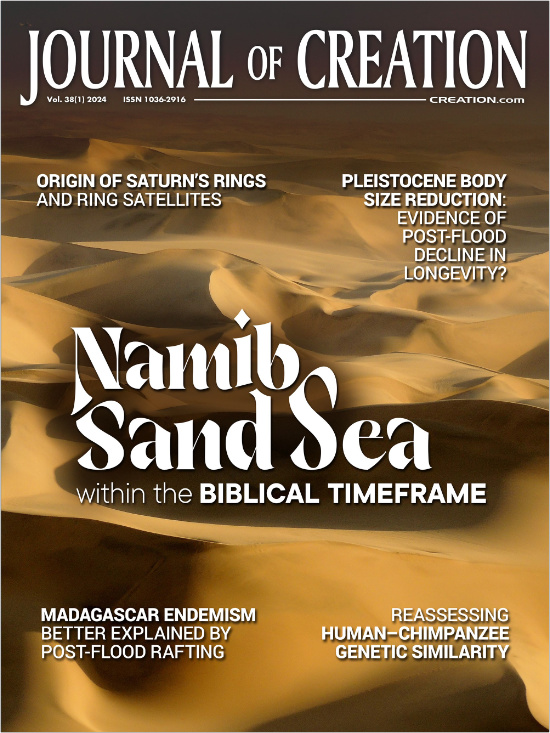
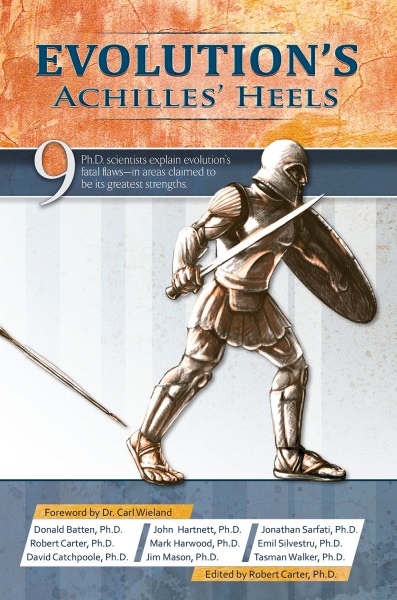
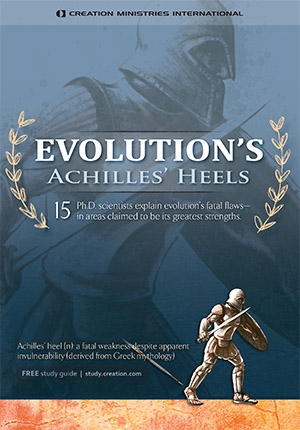
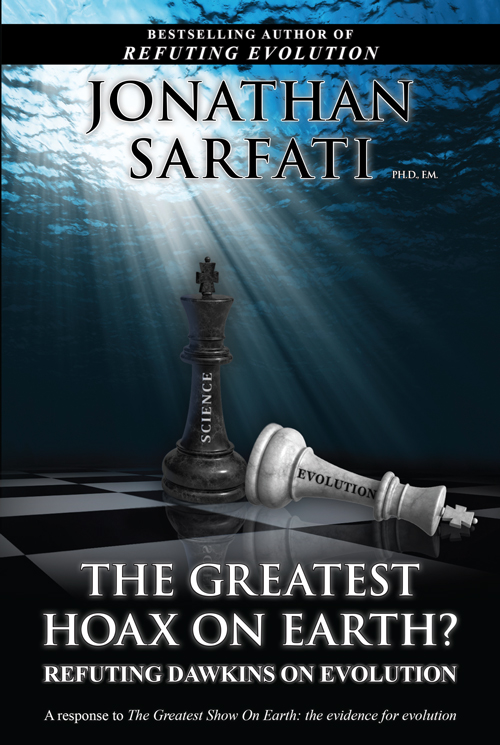
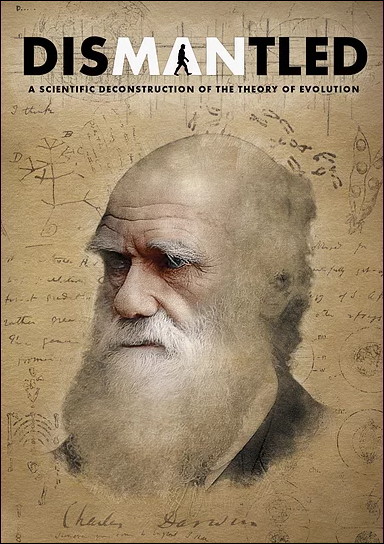
Readers’ comments
Comments are automatically closed 14 days after publication.